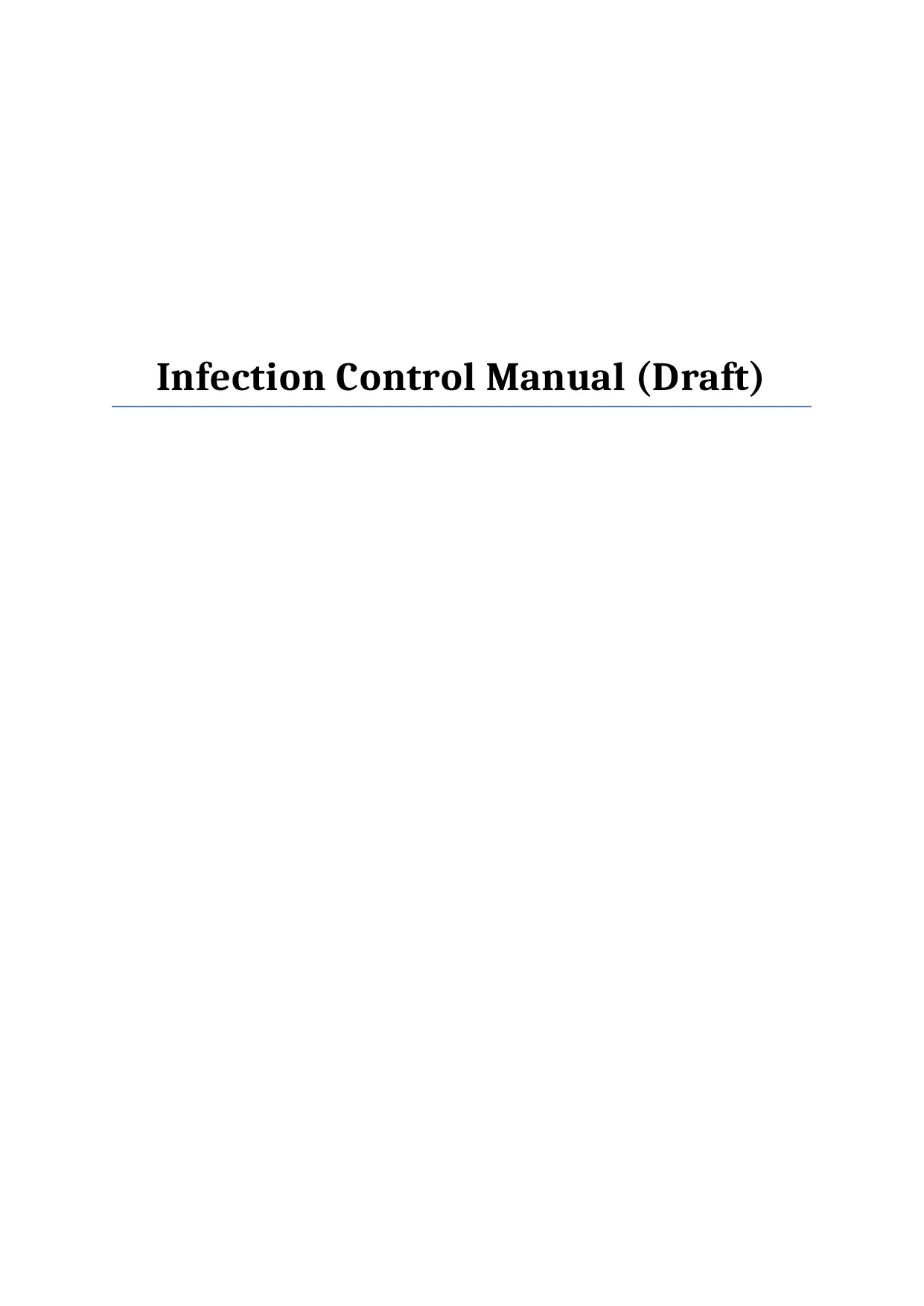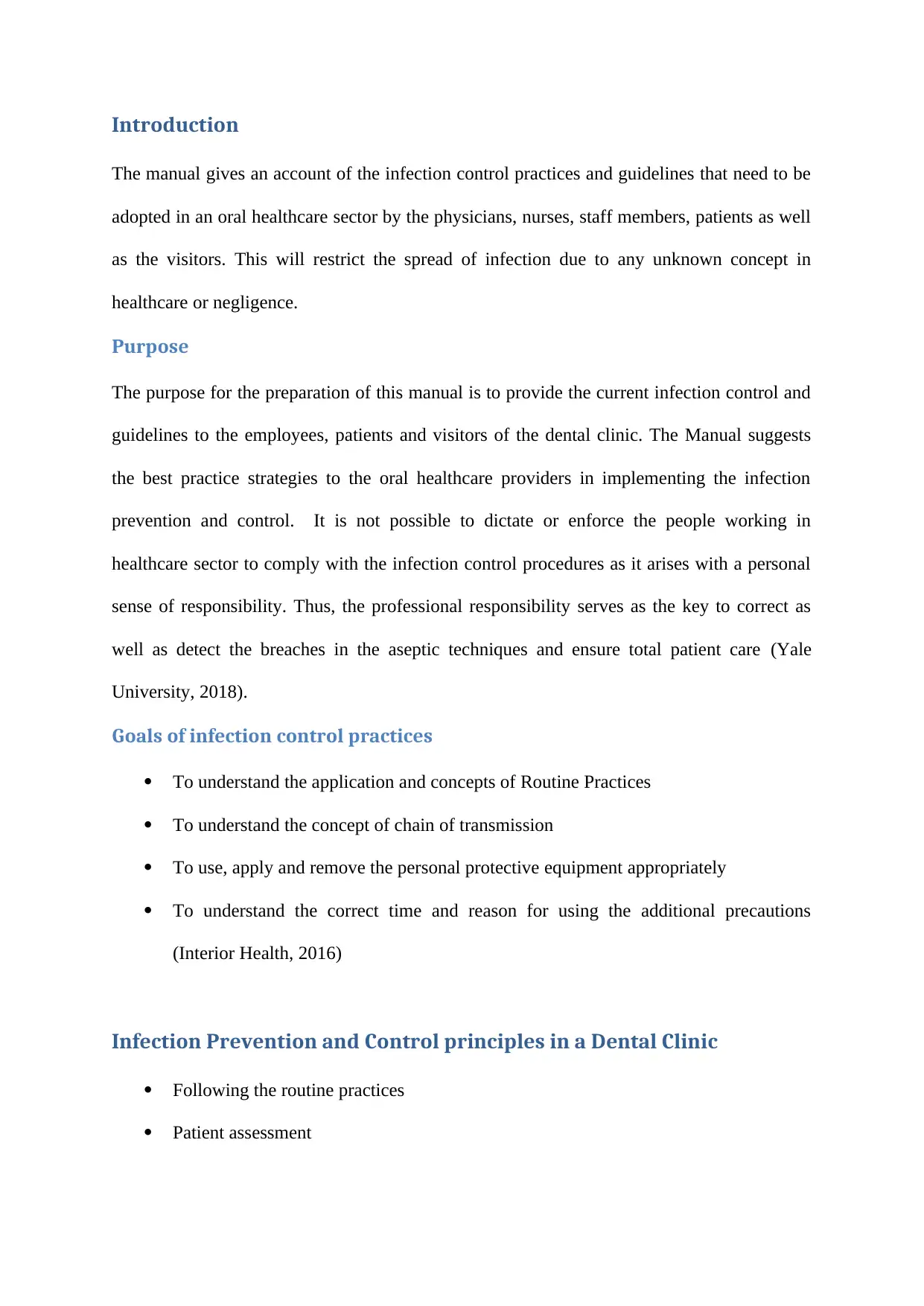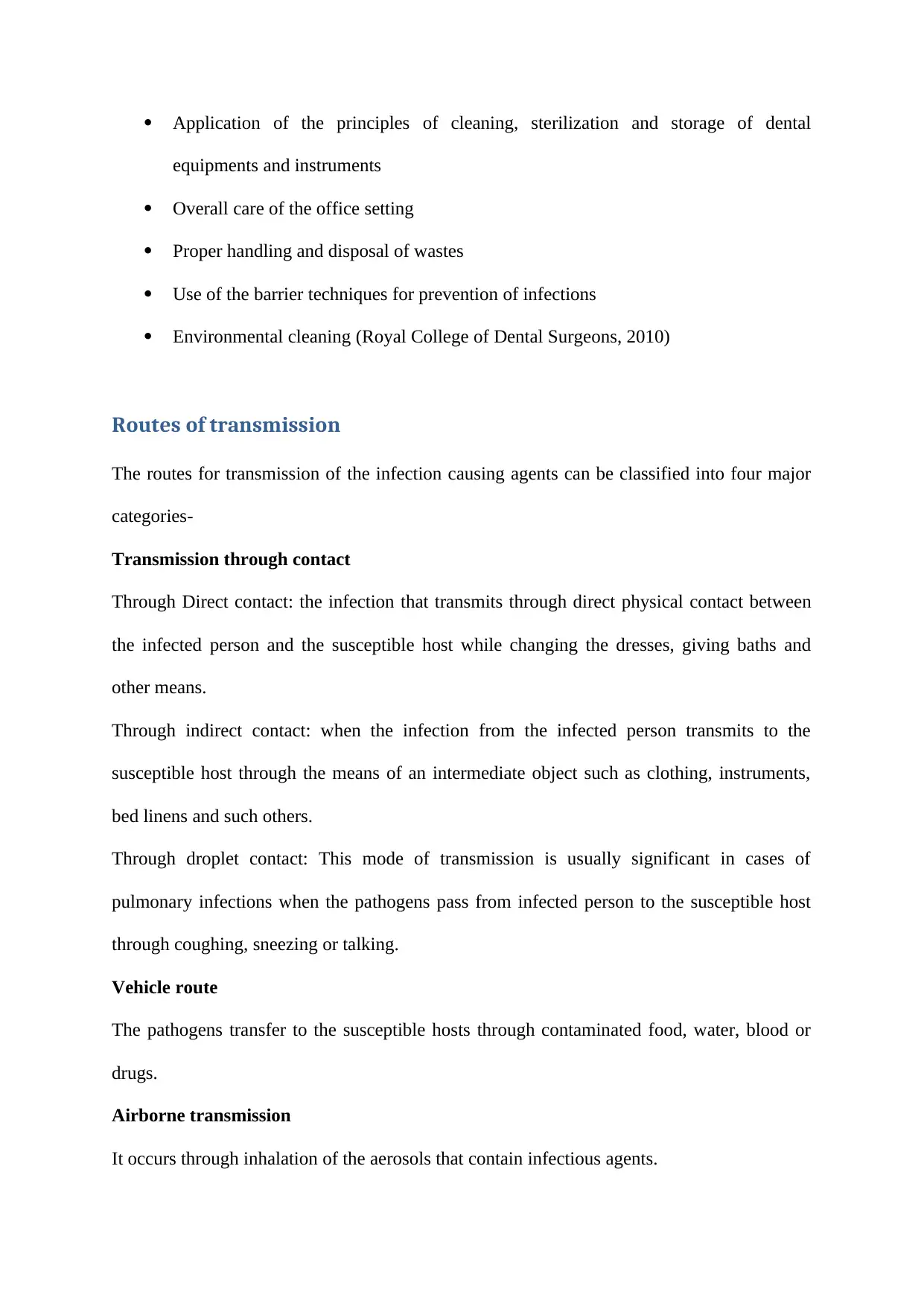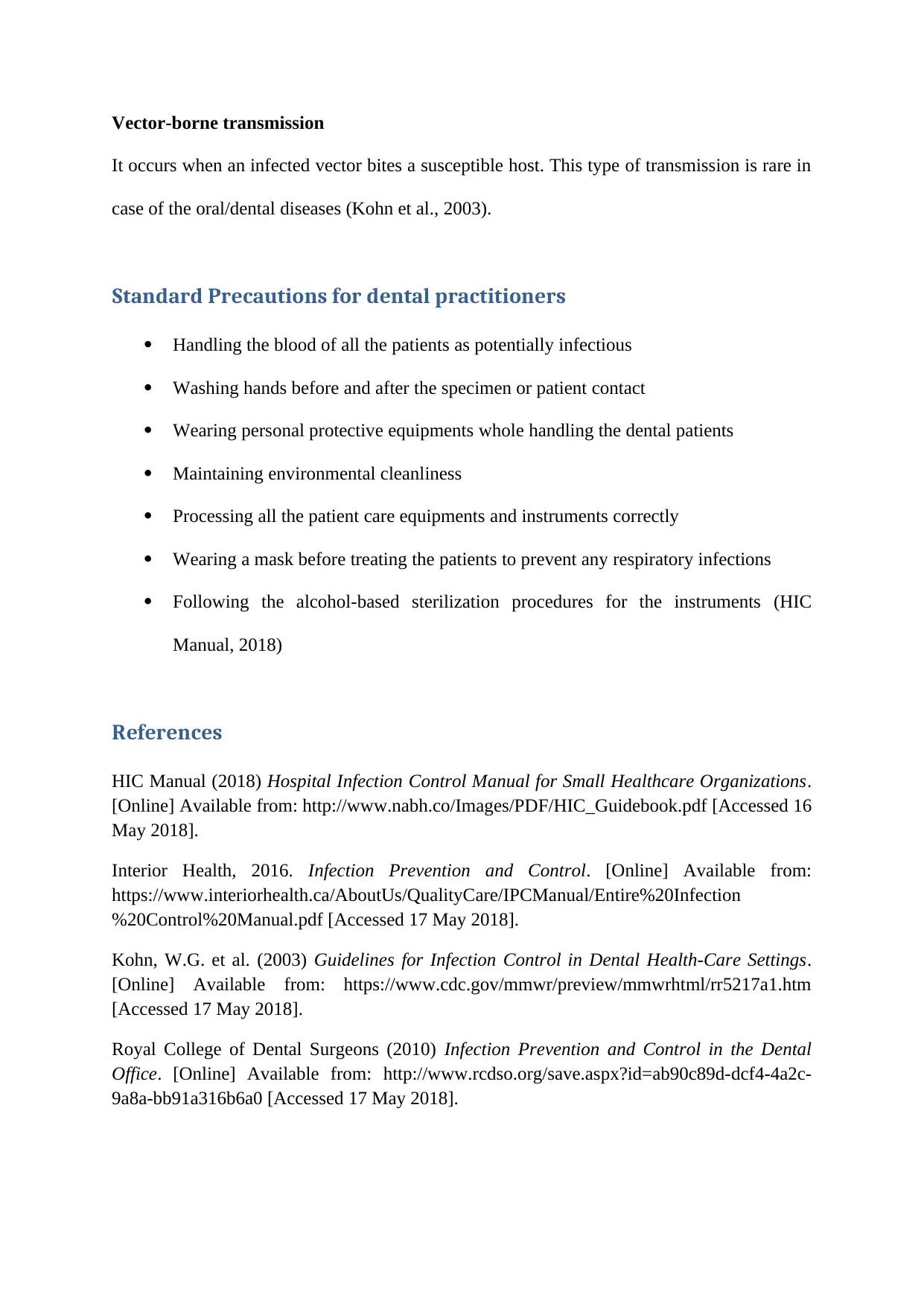Infection Control Manual Draft: Guidelines for Dental Clinics
VerifiedAdded on 2021/06/17
|5
|707
|42
Report
AI Summary
This report presents a draft of an infection control manual designed for oral healthcare settings. It outlines the purpose of the manual, which is to provide current infection control guidelines for employees, patients, and visitors, emphasizing the importance of professional responsibility in maintaining aseptic techniques. The manual defines the goals of infection control practices, including understanding routine practices, the chain of transmission, proper use of personal protective equipment, and additional precautions. It details infection prevention and control principles specific to dental clinics, such as patient assessment, equipment sterilization, waste disposal, and environmental cleaning. The report also classifies the routes of transmission, including contact, droplet, vehicle, airborne, and vector-borne, with a focus on standard precautions for dental practitioners like handwashing, PPE use, environmental cleanliness, and instrument sterilization. The report references key guidelines from organizations like Yale University, Interior Health, CDC, and the Royal College of Dental Surgeons, providing a comprehensive overview of infection control in a dental setting.
1 out of 5












![[object Object]](/_next/static/media/star-bottom.7253800d.svg)